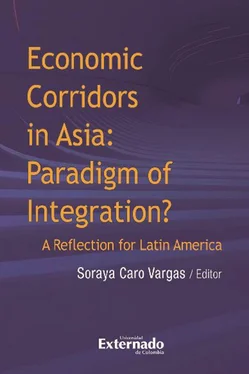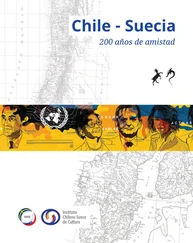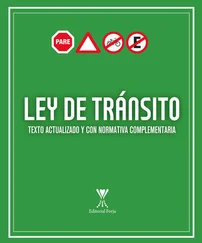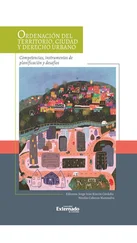In their chapter “Resurgence of South-South Cooperation and China’s Belt and Road Initiative in Asia and Latin America”, Ume Farwa and Ghazanfar Ali Garewal construct a narrative based on Chinese and Pakistani institutional reports, discourses of regional leaders, opinion articles and on discussions during academic seminars, in which the participants are those who decide on the formation of the China-Pakistan Economic Corridor (CPEC) and promote the think tanks to which the authors are affiliated, a fact that allows them to measure the tenor of the debate in Pakistan. The article analyses the flagship project of the BRI initiative, the China-Pakistan economic corridor and its impact on the much longed for resurgence of a real South-South cooperation, which according to the authors should function within its own conceptual framework, in a spirit of sustainable cooperation in order to achieve national commitment and interinstitutional cooperation of the countries involved and the assurances of a wide and diverse financing at the global, regional and subregional levels.
In his chapter, “Latin America Infrastructure Gap and the Arrival of Chinese Infrastructure Firms: Special Reference to the Argentina Case”, Leonardo E. Stanley, an economist and research associate of the Centre for the Study of State and Society (CEDES), makes a detailed analysis on the manner in which China approached Latin America as part of its politics of internationalisation ( go out ) of public and private enterprises in a political scenario which allowed it to leverage the consequences of the extended corruption in the continent, the political and financial instability that affected certain countries in the region as well as the institutional vacuum caused by government indifference, international banks and the private sector in the midst of the evident backwardness of infrastructure and functional connectivity. The researcher takes recourse to relevant primary sources (reports of multilateral agencies, governments, discourses of political leaders, statistics, and experts’ analysis in order to explain the vectors and incentives that enter the reckoning of the government and Chinese companies to make Latin America a strategic partner), to explain the nature of Chinese companies and their particular forms of financing and the way in which they adapt to the business environment of the region.
Paraguayan researcher Gustavo Cardozo, in his chapter “ El Mercosur en la búsqueda de Asia Pacífico ”, (Mercosur in the Search for the Asia Pacific), Paraguayan researcher Gustavo Cardozo uses a regional South American approach. He views the China BRI project in the framework of a clearer connection between the Pacific Alliance (PA) and the Common Market of the South (Mercosur) as they are apt zones for the development of bioceanic corridors and for their relevance and potential in port and logistical matters necessary for strategic sectors such as mining. There are hardly any studies on the Chinese phenomenon and its presence in South America from a regional perspective, and so Cardoso uses studies and primary source information for this analysis produced by these two regional authorities as well as analysis done by multilateral bodies.
Kelly Arévalo, a Colombian researcher affiliated to the Centre of Studies on Contemporary India of the Externado University of Colombia (CESICAM), writes on the “ Del fortalecimiento de las fronteras a la conectividad: lecciones para el Sur de Asia y América del Sur ”(Strengthening of the Borders to Connectivity: Lessons for South Asia and South America), a comparative analysis in which she privileges the discipline of geography, which leads us to interpret the territory and functional geography as that which explains the new dynamics of interdependence, economic development, regional integration and the exercise of power. From the geographical space of South Asia, she highlights the limitations in connectivity and the consequences on trade and regional cohesion, the development possibilities that can open up corridors identified by regional groups such as SAARC more than a decade ago and India’s responsibility in overcoming these obstacles. For South America, Arevalo presents a similar situation: a precarious physical connectivity, unfinished projects, a weakening of regional structures which result in a slow internationalization, a marginalization of global supply chains and a slow rhythm movement in social cohesion.
Pío García, researcher and professor at the Externado University of Colombia takes a regional, multipolar and critical approach to the phenomenon of the economic corridors in South East Asia. Through an analysis of recent geopolitical history, he explains how the connectivity strategy of the region is also influenced by players different from China, especially India and Japan, nations which have different infrastructure solutions and which besides facilitating the interconnectivity in the region, also introduce a balance of power. In his article “ El sudeste asiático en las nuevas rutas transcontinentales: Asean ”(South East Asia in the New Transcontinental Routes: ASEAN), García searches for answers to the impact that the two flagship projects of different scope and philosophies, BRI and the Asia-Africa Growth Corridor –AAGC, will have on the capacity of building consensus and in the centrality of decisions within ASEAN. Before giving us an informative analysis on the evolution of the grouping and its influence in the rise of other trans Asian initiatives, such as the Trans Pacific Association TPP and its updated version CPATPP, he refers to the forms of insertion of the South East Asian countries in the different mechanisms of cooperation. They are shown as not just searching for benefits in the field of physical connectivity, but also in the productive, social and environmental dynamics. According to García, although Latin America plays a strategic role as a provider of raw materials to China and emergent Asia, its States have lost the capacity to act in a unified manner in regional fora, its groups no longer have the ability to negotiate and are institutionally weak.
With a regional vision, but this time from Central Asia, Azhar Serikkaliyeva, in his chapter “The Role of the Central Asian Region in China’s New Silk Road Economic Belt Project, the Case of Kazakhstan”, analyses how China strategically constructs segmented dynamics in foreign policy, apparent in the diplomatic orientation called “Two Fronts and a Circle” that divides relations with great and emergent powers, as opposed to those that should be constructed in the framework of a peripheral diplomacy. BRI aims to build bridges with developing countries, above all those at the borders and which are strategic for its connectivity objectives. Other regional bodies like the Eurasian Economic Union (EEU) created to counter Chinese influence finally engaged with the BRI initiative believing it to be the best option for regional development. The strategic subjects relating to China and its neighbours, Kazakhstan, Kyrgyzstan, Russia, Tajikistan and Uzbekistan, which together with India and Pakistan are part of the Shanghai Cooperation Council (SCO), all engaged at some point of time with the definition of borders and once this was achieved, they have been ensuring strategies that guarantee national security, the supply of natural resources, especially through energy and gas corridors in the region, counter terrorism and the development of trade infrastructure so as to make of Central Asia a logistical bridge that joins China with Europe. The author mainly uses official sources of regional institutions, reports by international bodies as well as studies by Eurasian authours who specialize in the subject.
Gökhan Tekir is a Turkish researcher at the Middle East Technical University METU, from Smyrna, one of the most liberal regions of the Anatolian peninsula. His vision on the strategic albeit sensitive role of Turkey in the successful implementation of the China initiative (BRI) is presented through a geopolitical analysis with the title “Turkey and the Belt and Road Initiative”. The author focuses on how his country’s relation with China affects political stability, and he takes as his reference point one segment of the six transport routes proposed by China for crossing Central Asia. This is the one that avoids the Russian pass on the stretch that joins Baku in Azerbaijan with Tbilisi in Georgia and Kars in the east of Turkey (BTK). The author shows how Turkey’s decision to join BRI is compatible with the infrastructure and connectivity plans which the Turkish government has been putting into effect for more than a decade now. Turkey is the last port of call in Asia in order to reach Europe, and the megaprojects of rail and road transport on land and sea have to go through Istanbul. Modern infrastructure works are being built in the peninsula of Asia Minor and in the Bosphorus. In contrast to other countries within BRI, the Turkish private sector has an important participation in the construction, management and administration of projects as well as in the national banking system. Tekir’s analysis in chapter 12 studies the political risks inside the Turkish nation. Although Turkey’s close cultural and economic ties with the Turk people of Central Asia (who have the same Altaic linguistic roots), guarantees the acceptance of the Chinese presence throughout the region, the plight of the Chinese Muslims is a matter of grave concern to the Turkish side. The government’s closeness to China after the coup attempt against it in 2016, is the subject of intense debates inside political parties and also affects the relations of the government and business community.
Читать дальше












